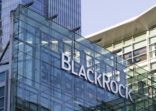The default rate for high-yield bonds are expected to be at around 1.5% for 2015, which is well below the historical average of 4.9%, Ward said.
“We are expecting the figure to be even lower when it comes to European high-yield bonds. It is likely to be 1% or even less,” Ward said.
She noted that quality has strengthened in the European high-yield bond market, with most bond issuers holding a BB rating as opposed to B, placing them at the “highest rung of high yields”.
Commenting on the US high-yield bond market, Ward said: ”The issuers of high-yield bonds in the US are those who have found their sweet spot where their rating has allowed them to maximise their balance sheets. You find that companies who are issued B or BB ratings don’t want to get back to investment grade [due to higher requirements].”
Volatility increase
Data presented by Babson Capital Management shows that high volatility in financial markets has resulted in weakened investor confidence in the primary market of high-yield bonds, with US and European high-yield bond mutual funds delivering -4.86% and -3.01% respectively.
Ward acknowledged that the twin factors of China’s unexpected currency devaluation and oil price movements impacted the global high-yield bond market, particularly in the US.
However, she said that the volatility experienced in the third quarter of this year will not affect Oaktree’s high-yield bond strategies.
“Our strategy is not one that relies on rapid shifting of sector from one to another. In fact, our portfolio tends not to look very different from year to year. [To us], trading is a cost structure. You don’t ever know if you are going to earn enough to cover the cost of trading.”
_______ _______________________________________________________________________
Oaktree Global High Yield Bond

















